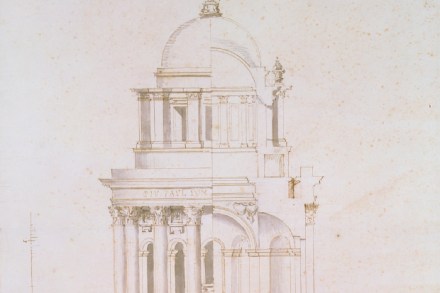Rescuing old Nick
In the conclusion to his very substantial study of England’s least known and most misunderstood Baroque architect, Owen Hopkins discusses some of the modern folklore that has developed around Nicholas Hawksmoor over the past 40 years, showing how swiftly a myth can capture the public imagination. The bulk of this unevenly written, fact-packed book is devoted to discussing Hawksmoor’s life and work. The last chapter considers the myths which recently gained him a large public and, ironically, brought him the critical recognition he failed to receive either in his own lifetime or for almost two centuries afterwards. A yeoman farmer’s son, born in Nottinghamshire in 1661, Hawksmoor joined Wren’s office




















